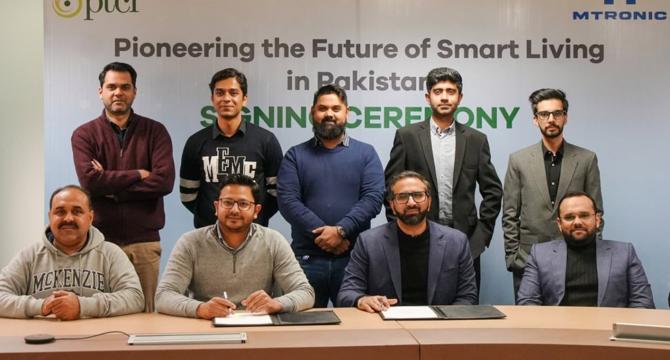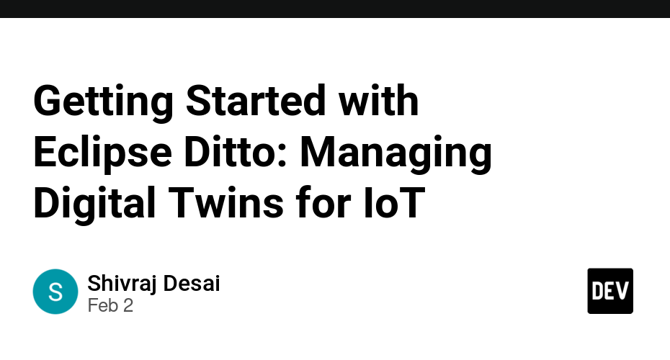IOT News
Iotbyhvm
1M
398

Image Credit: Iotbyhvm
Wokwi vs. Tinkercad Circuits: Which Simulator is Best for You?
- Wokwi and Tinkercad Circuits are popular simulators for electronics and embedded systems projects.
- Wokwi supports advanced projects with real-time debugging and customization.
- Tinkercad Circuits is beginner-friendly and suitable for basic Arduino projects.
- Choose Wokwi for complex projects with extensive microcontroller support, and Tinkercad Circuits for simple projects with an easy-to-use interface.
Read Full Article
23 Likes
Iotbyhvm
1M
215

Image Credit: Iotbyhvm
Real-Time Debugging in Wokwi: A Deep Dive for Advanced Users
- Wokwi has revolutionized the way embedded systems developers and electronics enthusiasts prototype and debug their projects.
- Real-time debugging in Wokwi allows users to set breakpoints, step through code, inspect variables, and simulate sensor inputs.
- Key features of Wokwi's debugger include breakpoints and step execution, real-time variable inspection, peripheral simulation, and ESP32/Arduino-specific debugging utilities.
- Best practices for efficient debugging in Wokwi include leveraging serial output, modular code, logging for persistent issues, and optimizing simulation settings.
Read Full Article
12 Likes
Iotbyhvm
1M
224

Image Credit: Iotbyhvm
How to Integrate External Libraries in Wokwi Projects
- Wokwi offers a platform for simulating and prototyping electronics projects.
- Integrating external libraries enhances projects by adding support for new hardware components, enabling advanced functionality, and simplifying code development.
- To integrate external libraries in Wokwi projects, first check if the library is supported in Wokwi's built-in library.
- If not supported, download the library source from platforms like GitHub or Arduino Library Manager and manually integrate it in Wokwi using the Library Editor.
Read Full Article
13 Likes
TechJuice
1M
352

Image Credit: TechJuice
PTCL Joins Forces with MTronic for IoT-Based Home Automation
- PTCL and MTronic have partnered to provide IoT-based home automation solutions.
- The collaboration aims to offer affordable and user-friendly smart home technologies.
- PTCL customers will receive exclusive discounts of up to 30% on these solutions.
- The partnership aims to foster digital transformation and encourage the adoption of IoT solutions for smart living.
Read Full Article
21 Likes
Discover more
Medium
1M
284

Image Credit: Medium
Controlling IOT devices using LLMs
- The conversational AI agent is built as a distributed service composed of a transcription service, a text to speech engine, an LLM server, and a gRPC server and client architecture that tie all the services together.
- This project eschews adding a web interface since it makes the assumption that natural conversational interactions are the future of interactivity.
- The automatic speech recognition client makes use of the RealtimeTTS open-source library that integrates a Faster-Whisper model using English as the primary language.
- The main application integrates a gRPC server together with the LLM client API calls to the Ollama server and the text-to-speech functionality.
- Regarding acknowledgments, this handshaking feature was implemented to get around the issue of talking over the agent chatbot while it replies.
- The latency in the above pipeline is from 1–10 seconds which is does not meet real-time requirements.
- As of early 2025, a limited subset of current open-source models does include multi-modal capabilities.
- This article showed how to build a complete conversational AI agent that can be used fully locally with no dependence on cloud services.
- The main idea was to evaluate the feasibility of current open-source models to implement fully local conversational interfaces that can actuate IOT devices.
- The conversational chatbot was tested on a Jetson AGX Orin resulting is almost real-time conversations.
Read Full Article
17 Likes
Dev
1M
110

Image Credit: Dev
Getting Started with Eclipse Ditto: Managing Digital Twins for IoT
- Eclipse Ditto is an open-source framework for managing digital twins in the IoT.
- Key features include real-time device management, secure access management, and flexible integration.
- To set up Eclipse Ditto locally, install Docker and Java 11+, then run the Docker command to start Ditto.
- Creating a digital twin involves defining a JSON structure and sending a request to register it in Ditto.
Read Full Article
6 Likes
Iotbyhvm
1M
389

Image Credit: Iotbyhvm
Arduino IoT Cloud Remote: Comprehensive Overview
- Arduino IoT Cloud Remote is a mobile application and a web interface that allows users to control their IoT devices remotely through dashboards.
- The Arduino IoT Cloud Remote is available as both a mobile app (for Android and iOS) and as a web application (accessible through any browser).
- Features of Arduino IoT Cloud Remote include customizable dashboards, real-time monitoring and control, cloud connectivity and remote access, integration with Arduino boards, and security measures.
- Arduino IoT Cloud Remote allows users to interface with devices that are connected to the Arduino IoT Cloud, offering a seamless experience for interacting with IoT-based systems.
- The Cloud Remote allows you to monitor sensor data in real-time, which is critical for applications that require constant data logging, such as smart homes, agriculture, industrial monitoring, and healthcare systems.
- By connecting your Arduino board to the Arduino IoT Cloud, you can access your IoT devices from anywhere in the world, making remote monitoring and control accessible for both beginners and experienced developers.
- The Arduino IoT Cloud Remote is versatile and can be used in a wide range of applications including smart homes, agriculture, industrial IoT, healthcare, and environmental monitoring.
- The cloud-based platform ensures that all communications between your devices and the cloud are encrypted, making it more secure to use.
- Arduino IoT Cloud Remote simplifies the process of creating, managing, and interacting with IoT devices in a connected world, making it an ideal solution for building and managing IoT applications.
- The powerful tool of Arduino IoT Cloud Remote offers hobbyists and professionals the ability to develop robust IoT systems that can be controlled from anywhere in the world.
Read Full Article
23 Likes
Dev
2M
64

Image Credit: Dev
Emerging Tech Trends of 2025: What’s Shaping the Future?
- 1. Artificial Intelligence (AI) Takes Center Stage
- 2. Quantum Computing to Revolutionize Problem-Solving
- 3. Blockchain Goes Mainstream
- 4. Green Tech Gains Momentum
Read Full Article
3 Likes
Securelist
2M
174

Image Credit: Securelist
Threat predictions for industrial enterprises 2025
- APTs are focusing on institutions and enterprises involved in new tech research and development as the demand for technical know-how grows.
- Increasing geopolitical turbulence, sanction wars, and the artificial restriction of access to efficient technology is boosting the drive to violate the intellectual property rights of leading enterprises.
- The improper use of AI technologies in the IT and operational processes of industrial enterprises may lead to the unintended disclosure of confidential information and to new security threats.
- Developers of security solutions for Linux have to catch up with solutions protecting Windows infrastructure.
- Insufficient investment of product developers or technology providers in their own information security guarantees that their customers will experience incidents.
- Almost every large industrial organization is its own vendor, multiplying all of the risk factors.
- The availability of so many tools for working with industrial equipment makes developing and implementing an attack on an industrial enterprise’s main production assets significantly easier than just a few years ago.
- Industrial enterprises have automated production, and inventoried and documented systems and processes which make them more vulnerable to attack.
- OT technology developers and suppliers are facing the problem that existing mechanisms built into their products may no longer be effectively safeguarding their intellectual property.
- The connection points of small remote industrial infrastructure facilities typically use inexpensive network equipment, not even designed for industrial use, which can be manipulated as an entry point into the IT or OT network.
Read Full Article
10 Likes
Dzone
2M
59

Image Credit: Dzone
How Apache Flink and Apache Paimon Influence Data Streaming
- Apache Paimon, a data storage system, can manage large volumes of data for realtime systems such as IoT devices, financial markets and e-commerce sites. It works as a sophisticated librarian that keeps data organised and readily available. Apache Flink, on the other hand, is a real-time stream processing framework that enhances the capabilities of Apache Paimon, allowing it to handle real-time data streams by refining, restructuring or enhancing them. Flink adds filters, aggregations and transformations to process events and Paimon stores these results to prevent missing, duplicate or contradictory records. Paimon supports ACID transactions (Atomicity, Consistency, Isolation, Durability) for data integrity, and Flink ensures exactly-once streaming processing ensuring each data is only processed and saved once, making it highly reliable. Paimon is optimized for analytical queries on historical data, and Flink provides fast analytics for historical and current data. Together they process batches and streaming data workloads for systems that require a unified approach to data processing, such as combining past and current interactions for customer behaviour analysis. Data structures for streaming data may lead to fragmentation and inefficiencies over time, hence the necessity for data compaction and evolution. This synergy between Paimon and Flink can build intelligent and real-time systems such as real-time fraud detection in financial applications.
- Apache Paimon integrates real-time streaming updates by fusing the lake format with a Log-Structured Merge Tree (LSM Tree). This LSM Tree is a method of managing and organising data effectively in systems that process a lot of writes and updates, such as databases or storage systems. After refining, restructuring or enhancing the incoming streams, Flink ensures real-time streaming processing and Paimon stores results to prevent missing, duplicate or contradictory records. Flink and Paimon cater to consistent and reliable data storage by filtering, aggregating and transforming events to ensure data consistency in its storage despite updates, deletions or late-arriving events. Paimon is optimized for analytical queries on historical data, and Flink ensures quick analytics for live and historical data suited for real-time analytics such as detecting anomalies, generating live dashboards and customer insights.
- Flink works with Paimon to compact and merge data periodically, preventing data fragmentation and inefficiencies. For instance, Paimon can manage a high volume of user activity logs on a social media platform without storage inefficiencies. Streaming and batch mentioned previously. As data evolves so does storage. Real-time fraud detection is where these two open-source software components shine.Using both components together builds highly intelligent and real-time systems.
- Apache Flink enhances Apache Paimon's strong storage and data consistency feature, allowing the combination to handle, process, and evaluate rapidly changing data. Organisations can make instant decisions and obtain insights while protecting the efficiency and integrity of their data. Apache Paimon supports Flink 1.20, 1.19, 1.18, 1.17, 1.16, and 1.15 and currently offers two different types of JARs. The bundled JAR for read/write data and the action JAR for tasks like manual compaction.
Read Full Article
3 Likes
For uninterrupted reading, download the app